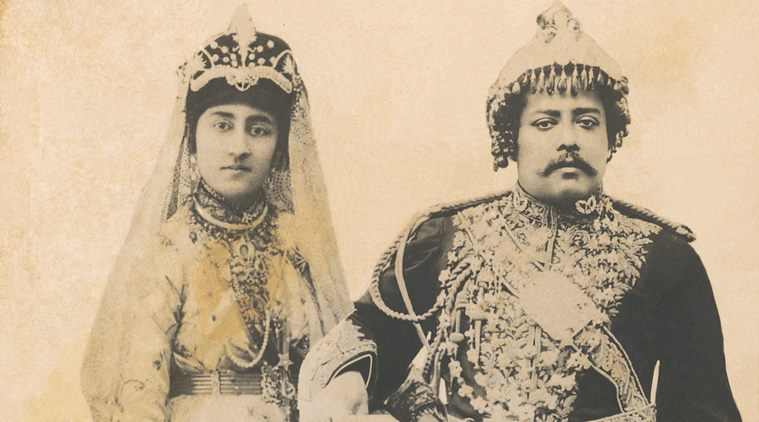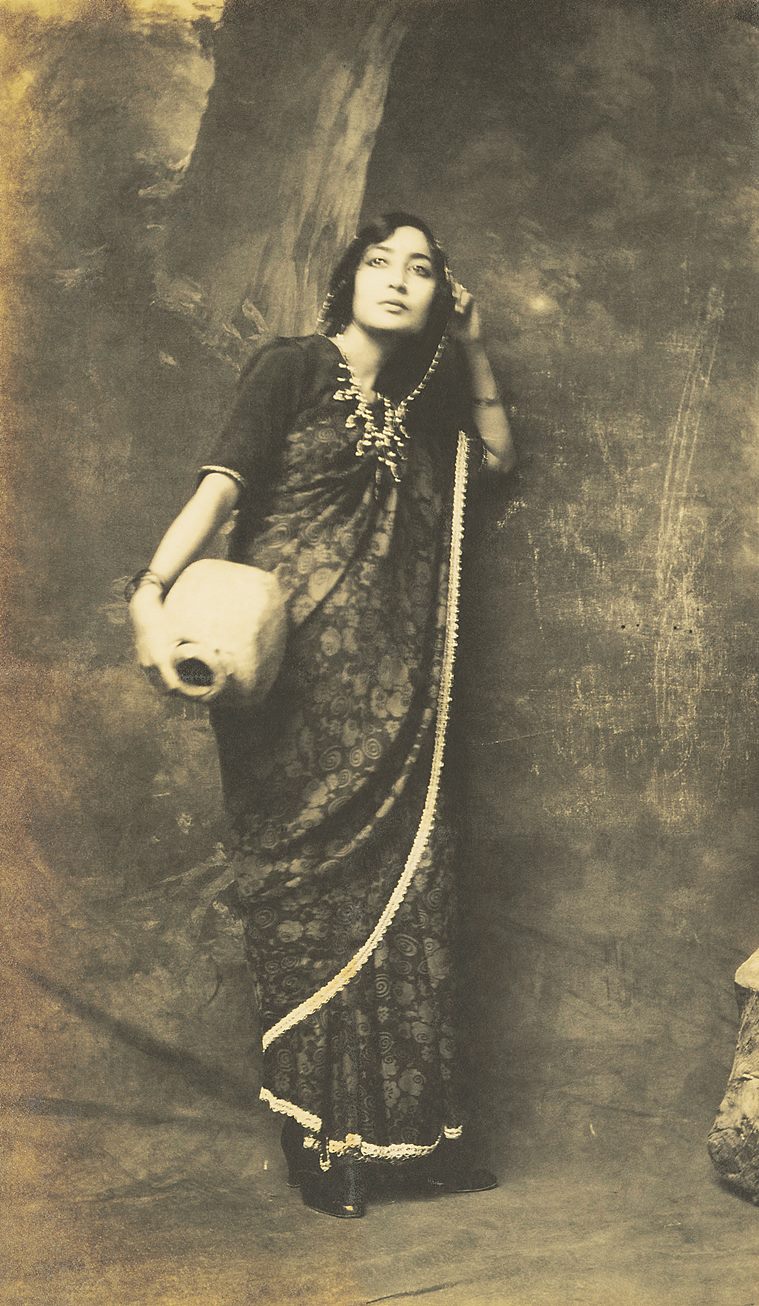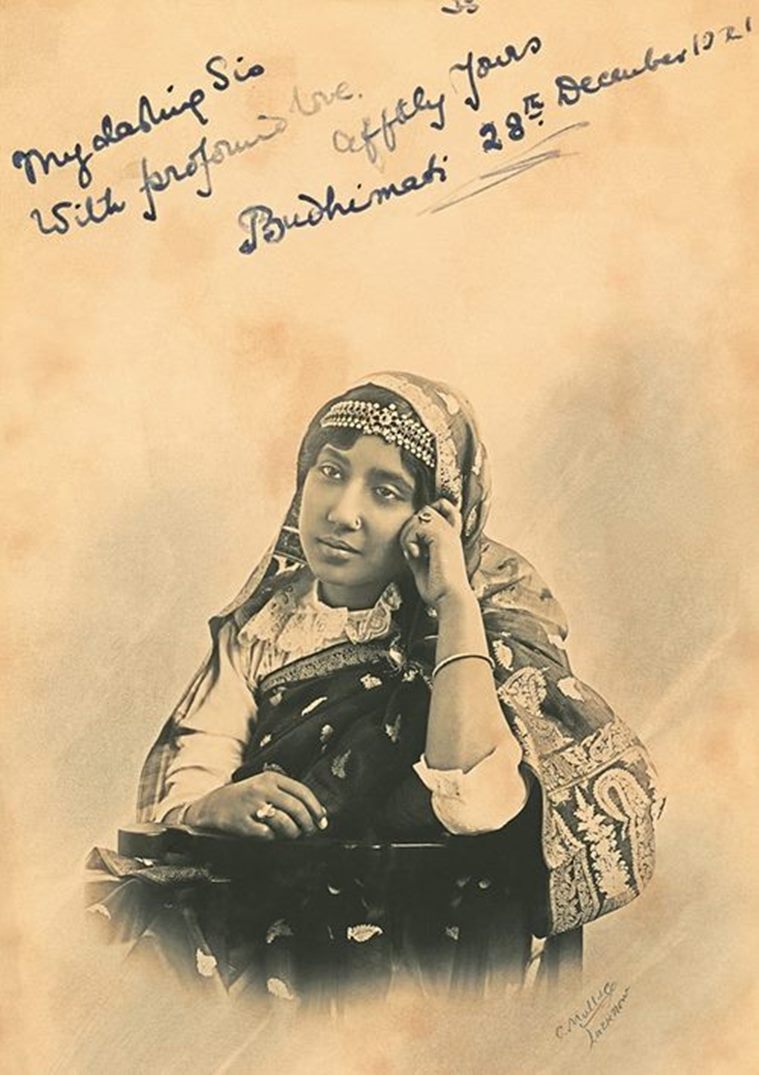Out of Exile: A Family Album
An exhibition of vintage photographs peeks into the intriguing life of an exiled Nepal premier

Dev Shumsher Jung Bahadur Rana with his wife
Rubbish. Five generations of rubbish,” said Ira Singh about the trove of some rare 20th-century photographs lying in trunks in her old house in Dehradun, adding, “you would much rather have every bit of space for the living than the dead”. Singh was almost ready to burn these images of her grandmother, Bhuvan Kumari Devi, and great-grandfather, Dev Shumsher Jung Bahadur Rana, the exiled Nepal premier. But that was until her daughter, writer Isha Singh Sawhney, turned to visual historian Aditya Arya of India Photo Archive Foundation, in 2014, to rescue them, thus birthing the Bhuvan Kumari Devi Archive.
Eighty of those 800 photographs make up the “Nirvasanama: Portraits of a Life in Exile through Changing Viewfinders”, which opened on World Photography Day in Delhi. Oscar Wilde’s words “everyone is born a king, and most people die in exile” ring true in Dev Shumsher’s case, Nepal’s first liberal, democratic Rana prime minister, though only for 114 days, but a social reformer who lived with his seven children in exile, and died in Fairlawn Palace, Mussoorie. The descendants would spurn you, lovingly, for calling them royalty.
The difference is stark in Dev Shumsher’s photograph, with wife and child, and his brother’s, Chandra Shumsher Jung Bahadur Rana, who, in royal finery, supplanted Dev as the prime minister. Yet, neither is smiling. The happy faces are reserved for the seven children, standing sideways in a file. One sees the classical beauty, sari-and-pumps-clad Bhuvan Kumari, seated in a carriage, next to a tree holding a pot, in shutter-speed headshots, almost like a Satyajit Ray heroine.
The difference is stark in Dev Shumsher’s photograph, with wife and child, and his brother’s, Chandra Shumsher Jung Bahadur Rana, who, in royal finery, supplanted Dev as the prime minister. Yet, neither is smiling. The happy faces are reserved for the seven children, standing sideways in a file. One sees the classical beauty, sari-and-pumps-clad Bhuvan Kumari, seated in a carriage, next to a tree holding a pot, in shutter-speed headshots, almost like a Satyajit Ray heroine.
If the compelling captures — in yellowing originals and sepia/green digitised frames, redolent of an era gone by — pull you in, the lack of captions pushes away. Ask who the two women perched on a hillock are, pat comes the reply “drama on the rocks”. Some bear signatures by the senders, like the one with Bhuvan’s youngest sister Budhimati, with arresting features, who died a widow.
The deteriorated images were cleaned physically and scanned on very high resolution, says Arya. “The original copy, kept as is, will go into polyester archival bags,” while a second digitised copy, with tweaks and improved contrasts but “no manipulation”, was created, reproducing the dog-ears and missing nose from the original. “If it’s torn, it’s torn.
The deteriorated images were cleaned physically and scanned on very high resolution, says Arya. “The original copy, kept as is, will go into polyester archival bags,” while a second digitised copy, with tweaks and improved contrasts but “no manipulation”, was created, reproducing the dog-ears and missing nose from the original. “If it’s torn, it’s torn.
The white dots, stains, the fading, were left as they were. Remember, something which was created as a proof in analogue time is a suspect in digital time,” says Arya. Also restored is a print of Gorkhapatra, Nepal’s first newspaper started by Dev Shumsher. “This is from 1901, which is huge,” says Arya, pointing at an image of Dev Shumsher, in all regalia with the sri panch (headdress), and his wife in a Victorian gown.

“Once the boys got together dressed up as girls and the girls, as boys. The Shumsher family is known for its sense of humour,” says Sawhney’s convivial aunt Manjeshree Rajyaluxmi Rana, chairperson of Shree Teen Maharaja Dev Shumshere JB Rana Pratishthan, who’s come from Kathmandu, bearing stories and “Dev Shumsher Rs10 postage stamps”, which the Nepal government released in 2016.
In one corner, a daylight studio has been recreated, with painted backdrops, an 1860 standing studio camera, and white fabric that filtered the soft sunlight. The changing backdrops, from studios to real landscapes, is also the story of the turn-of-the-century cameras — how smaller, box cameras made photography mobile.
On show are 150 vintage models, from Arya’s Museo Camera museum, including the Zeiss Ikon Ikoflex and early Kodak, to the complex Cycle Poco, resting on shelves with negatives, on one side of Bhuvan Kumari’s pictures, “recreated on overhead slide films, because in this archive there was not a single negative, only prints,” says Arya.
“Aditya has given the collection a new lease of life,” says Singh, “but if it comes back to my house, I would still call it rubbish.”
The exhibition is on till August 24, at Visual Arts Gallery, India Habitat Centre, Delhi






















 Bhuvan Kumari Devi’s younger sister Budhimati
Bhuvan Kumari Devi’s younger sister Budhimati
No hay comentarios:
Publicar un comentario